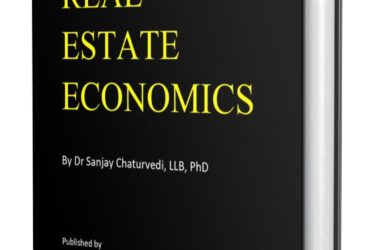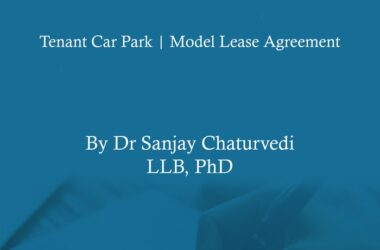 By Dr Sanjay Chaturvedi
By Dr Sanjay Chaturvedi
Chapter I : Introduction : Pranayame Vinyogah
Introduction
Over the centuries, the science of Yog has matured. YOG means total. We have been practising Yog and for those who have never gave Yog a chance, will inclined for this ancient science of self repair and self sustaining of human body through Yog and Pranayam. Pranayam is an important part of Yog and Kriyas (activities).
What is Pranayam?
According to Mahrshi Patnjli “ pg 161” the breakup in the rhythm of breath and control of it, is Pranayam. In this process, inhaling air means “Swas” and exhaling inner air is Praswas. And blocking and controlling these two airs is known as Pranayam in Yog.
According to Mahrshi Vaschpati “Rechak” “Purak” and “Kumbhak” are forms of Pranayam where Praswas and Sawas are controlled in different manner and for different periods.
Without Pranayam, Yog cannot be completed nor are practices of Yogic Asans complete without proper use of Pranayam. Controlling breath and its rhythms with different poses, time and for different periods for different purposes needs elaborate knowledge before the practice of Pranayam.
According to Manusmiriti (4|94), Yogi achieves longer life by performing Pranayam.
According to Yog, human body has five Vayu (air) Pran, Apan, Saman, Udan and Byan. Pran reside in chest, Apan in anal, Saman in Nabhi, Udan in throat and Byan resides in all over body.
There is five Normal Vayu or Upvayu; Nag, Kurm, Krakar, Devdutt and Dhananjay. Nag gives us Dakar/ burp, Kurm blinks eyelids, Krakar sneezing, Devdutt yawning and Dhananjay never leave the human body even after death.
Controlling the breaths and its rhythm with other Yogic kriyas makes Pranayam. There are many types of Pranayam and much process along with purposes which we will discuss in length in this book.
Correct way of doing Pranayam is very important. One must have a conditional healthy body to practice Pranayam. We must observe a correct process during and after the use of Pranayam. There are some rules of Yog must be followed to Pranayam like for example Yog is prohibited in certain conditions. After the bath, Yog is prohibited. And such conditional discipline must be observed.
Advantage? Of course, we will discuss in length about each type of Pranayam and its advantages but over all advantage are extra ordinary practices and results. We have seen people with hyper tension, diabetes and those having recoverable diseases have shown extra ordinary results. Those who have been having minor objectives like weight reduction, body fitness, better sex and great look on face also have done wonderfully well.
One of the biggest advantages of Pranayam is to develop inner strength which gives us power to fight the illness and various bacteria. It enhances the immune system and repair damaged cells instantly. Formally our body does this exercise while we are asleep.
Those who want to give away liquor and tobacco, Pranayam is the best way to leave these without any medical assistance, primarily, if multiple illness are reported then one must do it in the Doctor’s observations.
How does it works, which extraordinary ancient science have positive effect while we perform Pranayam? Modern medical science still looping in dark and still to find ways or struggling with side effects. Pranayam do not have any side effects.
We have seen many professionals and sport persons practising to enhance the stamina and power to hold human body to its extreme practice. We have seen footballer, boxers, deep water divers and swimmers holding their breath for those extra seconds to win over normal human practice.
The power of Pranayam along with Yogic exercise is tremendous. It just not only arrests the illness but also enhance a healthy environment. In Yog, it is said that a healthy person is always have a perfect brain hence to have correct decision and use the optimum level of brain power, we must keep our self healthy. Human brain is extreme power in this universe and keeping it alert and healthy is big task.
Brain has highest power of thinking, analysing and storing data. To up keep the information and keeping young, brain needs exercise. Human can exercise and refurbish entire body but not brain. Only Pranayam and meditation can rejuvenate and keep refresh the brain and its power every time you practice Pranayam.
Because human are having power of brain, we are not animals. We have been practising Pranayam ever since men started running. Controlling breath while hunting in age old days, was the first step. Today, athletic practice requires a well balance and control breaths to run and jump. So do any singer or any wrestler. A flute player plays wonderful music while modulation of sound and prime force being his breath. A mouth organ is a perfect example of Pranayam.
Brain and lungs are that part of the body which cannot be exercised externally. All what brain requires is oxygen to live. Medical science keeps brain alive while the person is dead. And while body is alive the brain is declared dead. One thing is clear from above that lungs keep brain not only alive but healthy.
Should we need to understand medical science to practice Pranayam? The answer is NO. We just have to comfortably control the rhythm of our inhaled and exhilarated breath while counting few moments for each such exercise. That’s it. That’s Pranayam.
Counting of pulses in a minute and understanding person’s illness was ancient science. Modern medical science has now developed but forefathers were dependence on science of breathing and counting every pulse out of it was the only tool to diagnosis. Whatever was transformation of centuries and science but the art of controlling breath for a purpose never became out of date. The structure of human body has not changed nor the bio-logical system. Ancient science to control breath has not changed nor is its advantage and good effects.
How much does it cost? It cost you your few minutes and little attention on your thoughts and rhythm of your breath. A neat clean environment and pleasing peace is required. That’s it.
Those who have been practising the sandhya vandan, knows that Pranayame Vinyogah phrase has a vital meaning to the Yogic Kriyas. Many times the practitioners of Yog have myth that they should do Yog after bath. But in Yog, doing asans after bath is prohibited. Same way, Pranayam has its own protocol and process. In the coming chapters we shall look these protocols in depth and look at the process before we actually start. Half knowledge is dangerous. People tend to presume some of the process while looking at half programmes on TV shows and CDs.
Most common knowledge of Yog is from Shiv Mahapuran, a holy book on Lord Shiva, Hindu God who inspired the life and after life also. In many chapters of Shiv Mahapuran it gives us immense sense of Yogic science. The Shiv is ultimate honour or stage of Yog. By achieving various stages, a Yogi go through the process of Yog and various Asans and Kriyas, can achieve the Ultimate stage.
The Shiv Mahapuran has described Sound, Vayu (Air), and Flame within. Omkar is one of the pronunciations which gives vibration within and kills gems, bacteria and many aliens to the body. Similarly Vayu and Agni have their role to play for Yogic Kriyas. We don’t have to go into that details but the purpose of Pranayam is to control and balance these Chemicals, metabolism, blood circulation and control which includes reparatory and digestive system.
Pranayam can control Blood Pressure, Blood Sugar, Thyroid, and any illness which is related with blood and its components including amnesia.
The regular practice and prolong process helps us achieve the natural way to keep ourselves healthy. You cannot expect miracle. You have to devote time and discipline. You have to forgive the irregular sleep and eating untimely. You cannot have pills and at the same time do just against what you are taking pills for. Hence self discipline and strong will power needed to practice Pranayam.
If you are ready, I am ready for greatest surprise for you from the science of Pranayam. Happy reading.
Asans referred in this book:
- Padmasan
- Siddhasan
- Sukhasan
- Shirshan
- Mayur Asan
- Veerasan
- Swastik Asan
- Guda Asan
- Shav Asan
- Vajarasan
- Isthir Asan
- Sinh Asan
- Surya Namaskar






